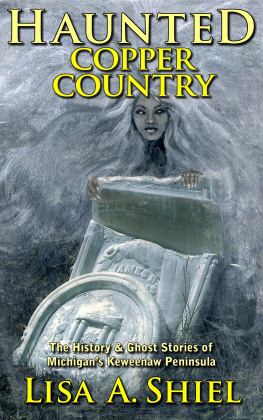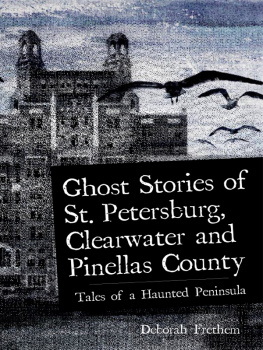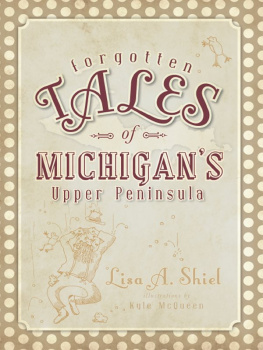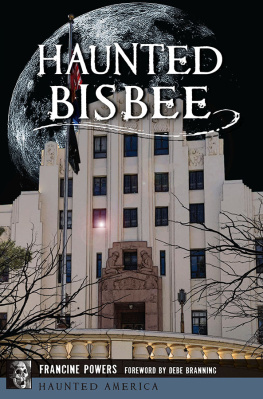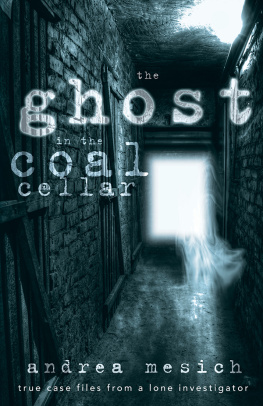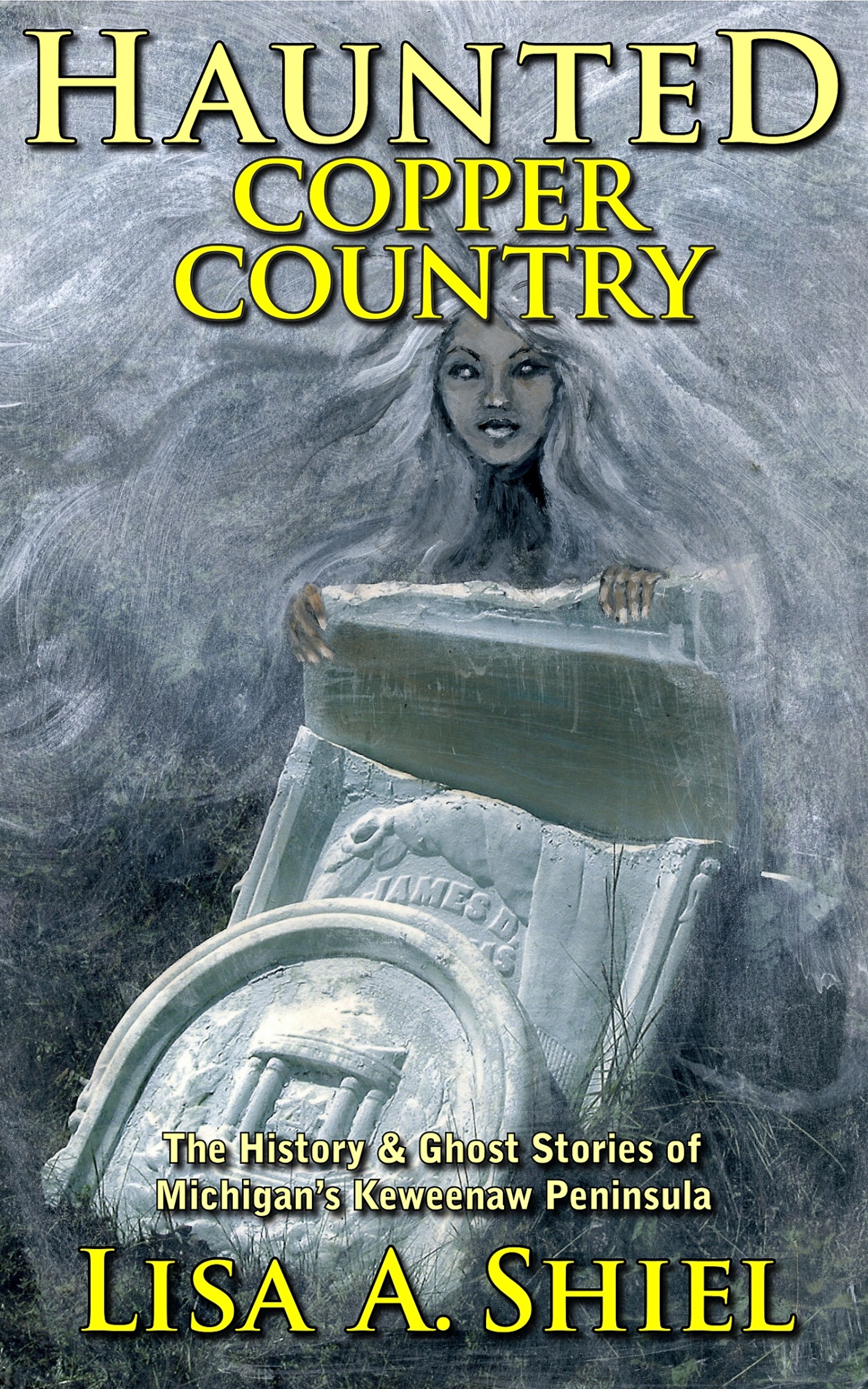Lisa A. Shiel
Other Books by Lisa A. Shiel
Fiction
From Jacobsville Books
Confronting Sasquatch
Faces of Bigfoot [e-book]
Faces of Bigfoot 2 [e-book]
The Faces of Bigfoot Collection [e-book]
The Human Origins Series
The Hunt for Bigfoot (Book One)
Lord of the Dead (Book Two)
Relic of the Ancient Ones (Book Three)
Revenge of the Ancient Ones (Book Four)
Bigfoot Beginnings (Backstories, Vol. 1) [e-book]
The Bigfoot Effect (Backstories, Vol. 2) [e-book]
Traces of Bigfoot (Backstories, Vol. 1& 2) [e-book]
Bigfoot, Mummies, and Aliens: The Human Origins Series Collection (Books 1-4 with Backstories Vol. 1 & 2) [e-book]
Nonfiction
From Jacobsville Books
Forbidden Bigfoot
Creature of Controversy (Forbidden Bigfoot, Part One) [e-book]
Top Secret Sasquatch (Forbidden Bigfoot, Part Two) [e-book]
Backyard Phenomena (Forbidden Bigfoot, Part Three) [e-book]
The Evolution Conspiracy
Backyard Bigfoot
From The History Press
Forgotten Tales of Michigan's Upper Peninsula
From Trails Books
Strange Michigan (with Linda S. Godfrey)
Contents
Acknowledgments
I'd like to take this opportunity to thank the folks who graciously offered their knowledge and support to me during the writing of this book. I'm grateful to all of them:
- John Grathoff of Calumet Paranormal https://www.facebook.com/pages/Calumet-Paranormal/232934792572
- Jenny Rohlf and Lori Brown Smith of Keweenaw Paranormal Society https://www.facebook.com/groups/597334596991088/
Please check out their Facebook pages. They've done some fascinating work investigating the haunted side of the Copper Country.
Introduction
For as long as humans have sat around campfires in the dark of night, we have told spooky stories to entertain and unsettle each other. The human affinity for fear, under controlled circumstances, is nothing new. We love to be scared. Scientists may come up with biological and sociological reasons for this love of getting spooked, but all that really matters is that we do enjoy a good thrill. Ghost stories have always played a significant role in our need for controlled fear.
Does this mean ghosts aren't real? Of course not. Millions of people around the world believe in life after death, and that spirits communicate with the living (or at least try to) for various reasons ranging from unfinished business to comforting loved ones left behind. The purpose of this book is not to debate these beliefs, or to prove whether ghosts do indeed exist. This book has one purpose to serve as a textual campfire around which you, the reader, may huddle to immerse yourself in some of the spookiest tales from Michigan's Copper Country.
Unless you live in Michigan, you may not have heard of the Copper Country, also known as the Keweenaw Peninsula. It lies on the northwestern end of the Upper Peninsula, near Wisconsin, and it juts out across Lake Superior toward Canada. The Keweenaw has an ancient and mysterious history, beginning with its formation from the remnants of a prehistoric rift valley. The region's volatile geologic past led to the creation of its most famous natural resource copper. A genuine earthquake happened nearby back in 2010, just outside the southern U.P. town of Escanaba. Maybe the region's history of quaking and shaking keeps the spirits unsettled. Whatever the reason, the Copper Country boasts a surprising number of haunted places for such a small area.
This book is more than a collection of ghost stories. It's also a celebration of the Copper Country's rich and diverse history. Because I live and write here in the heart of the Keweenaw, I have developed a deep appreciation for and fascination with the region's history and its paranormal side. In my previous book, Forgotten Tales of Michigan's Upper Peninsula, I presented little-known stories from the Keweenaw's mining heyday in the 1800s and early 1900s, everything from strange murders to unexplained earth tremors. In Haunted Copper Country, I delve into even stranger stories involving close encounters of the otherworldly kind. Each haunted tale is woven into the historical background of the location in question, offering a fuller picture of what makes a haunted place, because behind every ghost story is a true story. Sometimes the truth is merely a seed out of which tales grow; in other cases, the history overshadows the ghostly goings-on. This book endeavors to shed light on both types of haunted tales, from well-known hauntings to stories never before published.
Is the Copper Country haunted? Read these tales and decide for yourself.
Chapter One
Calumet
In Houghton County, just north of the cities of Houghton and Hancock, lies the high country a gathering of communities nestled atop the spine of the Keweenaw, in an area prone to heavy snowfalls. Today, Calumet Township includes the villages of Calumet and Laurium, plus the surrounding communities of Osceola, Centennial Heights, and Kearsarge. These days, no one would consider Calumet to be a bustling metropolis, but in the heyday of copper mining, Calumet was just such a place.
Red Metal Days
By the 1860s, Calumet had already become well established as a copper mining community, and in 1866 a new road was under construction that would connect Calumet Township with Hancock to the south. The operations of the Calumet & Hecla Mining Company, often known simply as C&H, served as the impetus for much of the development in the Calumet area. Back in those days, however, Calumet was known as Red Jacket and the village now called Laurium was known as Calumet. This makes the history of the region a bit confusing at times, especially since Red Jacket was often known colloquially as Calumet. The two villages of Red Jacket and Calumet (Laurium) existed side-by-side, much as they do today. When driving up M-26 from Lake Linden, it's hard to distinguish the modern villages of Laurium and Calumet, as their boundaries blend together.
Back in the days when Calumet was Red Jacket and Laurium was Calumet, the township that encompassed both villages boasted an ethnically diverse population. Finnish, Cornish, Irish, and Italian immigrants are most famous today for the part they played in Calumet's history, but Houghton County also became home to immigrants of Croatian, Chinese, French Canadian, Polish, and Slovenian descent. By 1870, Calumet Township supported 3,182 residents, with immigrants making up over 60% of the population. At this time, the village of Calumet (now Laurium) had yet to be born.
Copper played once served as the keystone of Calumet's economy. This monument preserves a chunk of float copper weighing in at 9,392 pounds, which was dug up a few miles outside the village back in 1970. Photo by Lisa A. Shiel.
The year 1875 marked a milestone in the township's history, as Red Jacket became an incorporated village. By this time, the township had five schools and library with over five hundred books, making it the largest library in the Keweenaw. The township's population continued to grow at a brisk pace, thanks in large part to C&H and other local mining operations. As of 1880, the population had surged to 8,299 in the township as a whole, with 2,140 of those residents in Red Jacket. Copper mining had reached its boom, and things would only get better, economically speaking, for the next three decades. Mining was hard and dangerous work, but copper made the Keweenaw. Without it, Calumet might never have reached the heights it achieved during the days of C&H.

